The trek which falls between warm districts of Punakha and Wangdue Phodrang is tailored for when the cold winter season arrives and the probability of rain is lesser in Bhutan. This trek route ascends till 2300m above sea level so the temperature and weather remains perfect for the excursion. The trek route falls along oak and pine tree forests, rhododendron fields, lake side overnight camp, and religious monasteries. The trek descends to warmer Wangdue Phodrang valley.
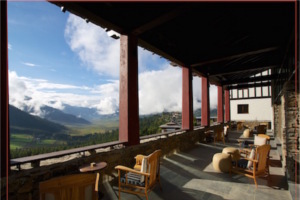
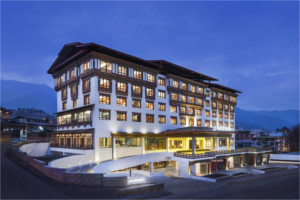
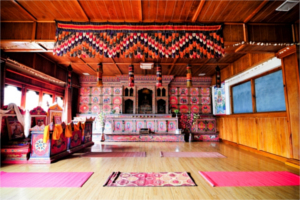
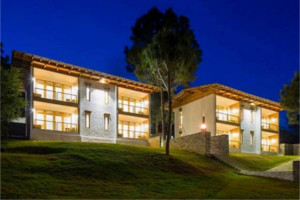
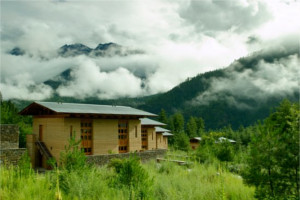
Welcome reception by our representative and drive to a hotel at Paro. Visit around Paro town in evening.
Overnight at Paro.
Early morning breakfast
Visit Ta Dzong, the National Museum. It was originally built as a watchtower in 1649, strategically located overlooking the Rinpung Dzong and the Paro valley. The watchtower was renovated in 1968 and transformed into national museum. The round shaped structure houses collection of Thangkas, 3D map of Bhutan, egg believed to be laid by a mule, iron links from Iron Bridge at Tamchog and many ancient and modern artifacts.
Note: Photography and videography are not allowed inside the museum.
Visit Rinpung Dzong, the administrative and religious center of Paro Dzongkhag (district). The fortress name translates to “Fortress on a Heap of Jewel” and has long history of having defended Tibetan invasion through the site.
Drive 14kms north to Drugyel Dzong, after massive destruction by fire the Dzong, remained as a ruin for several years until recently to commemorate the birth of Gyalsey the prince, the Dzong is undergoing reconstruction to its former glory.
After lunch drive 40min to Thimphu.
Overnight at Thimphu.
Breakfast
Visit the National Memorial Chorten (Stupa), built in memory of the 3rd King of Bhutan. Visit the Art School and Changangkha Lhakhang (a temple built in 12th century by a Tibetan saint).
Lunch
Visit the National Takin Reserve Center to see Takin, the national animal of Bhutan and Trashichhodzong (fortress of glorious religion). Trashichhodzong in its current form was completed in 1968 and it houses the throne room of His Majesty the King of Bhutan. It is also a center of monastic body and houses main secretariat building. The majestic Dzong located along the Wangchu (Thimphu River) has a Tendrel Thang which is the venue for Thimphu Dromchoe and Thimphu Tsechu, the annual Thimphu Festival where thousands of people fill the courtyard to witness the mask dances, traditional dances, and many more.
Visit Semtokha Dzong, five miles from main Thimphu town, the Dzong is considered to be the first ever built by Zhabdrung Ngawang Namgyel in 1629, therefore the oldest fortress in Bhutan. Located on a ridge overlooking the entire valley, the Dzong houses a chapel for protective deities Yeshe Goenpo (Mahakala) and Palden Lhamo of Bhutan.
Visit handicraft market and centenary farmers market.
Stop at Dochula pass 3100m on route to Punakha from Thimphu. Dochula pass is one of the famous landmarks in Bhutan from which one can sight the Himalayan Range of Bhutan on clear winter days. The place is adorned with Druk Wangyel Chorten, 108 stupas built to honor the 4th king of Bhutan and bring peace to the region. The stupas were built under the patronage of Ashi Dorji Wangmo Wangchuck.
Descend to Punakha Valley (1280m).
Punakha valley served as the capital of Bhutan till 1955 until it was shifted to Thimphu. The Punakha Dzong is still the winter seat of Je Khenpo (Chief Abbot) of the monastic body as the place has a temperate climate with Phochu and Mochu Rivers flowing through the fertile fields of the valley.
Stop for lunch at campsite at Khuruthang.
Visit Punakha Dzong.
Punakha Dzong or Pungthang Dewa Chenpai Phodrang, the palace of bliss was built in 1937 by Zhabdrung Ngawang Namgyel. The second oldest Dzong is religiously and architecturally significant to Bhutanese as it houses several sacred relics, scriptures, statues and is the place where the first king of Bhutan was crowned in 1907. Punakha Dzong is also famous for Punakha Drupchen where the 17th-century battle scene with Tibetan invaders are recreated and is followed by Punakha Tsechu where grand Thongdrel of Guru Rinpoche is unfurled with costumed mask dances and rituals.
Overnight at the camp.
Start the 12km trek by crossing the longest suspension foot bridge in Bhutan over Pho Chu. Ascend gradually through pine forests towards Limukha village via Shengana and Dompala village.
Reach to the campsite at Limukha.
Overnight at the camp.
Trek the stretch of 14km route along rhododendron and oak forests towards Chungsakha. The village is a small as about 10 households makes the settlement. Cross small monastery dedicated to Lam Drukpa Kuenley, the Devine Madman.
Overnight at the camp.
Negotiate brief ascend and Descend downhill for next 13km via village of Sha towards Samtengang.
Reach the campsite nearby a lake.
Overnight at the camp.
Descend further downhill until reaching the motorable road. End of trek.
Drive to Wangduephodrang and stop for lunch. Drive 3 hour to Thimphu.
Overnight at Thimphu.
Visit Buddha Dordenma, the largest standing Buddha Statue in the world. Buddha Dordenma is 54 meters (177 ft) tall, one of the largest Buddha Shakyamuni statue in the world, fulfilling a prophecy that mentioned a large statue of either Guru Padmasambhava, Buddha or of a (Vajrakilaya) Phurba would be built in the region to bestow blessings, peace, and happiness on the world, the statue erection was started in 2006 and completed in 2015. The statue is mentioned in the ancient Terma of Guru Padmasambhava himself dated from approximately the sixth century, the prophesized Terma was recovered some 672 years ago by Terton Dorje Lingpa (1346) and 104 years and after 568 years ago by Terton Pema Lingpa.
Drive to Paro after lunch.
Overnight at Paro.
daily tariff:USD 250 Per person per night
surcharges:
Solo Traveller: USD 40 per night
Dual Traveller: USD 30 per person per night
Three travellers and above: surcharges not applicable
Visa fees: One time payment of USD 40 per person.
daily tariff:USD 200 Per person per night
surcharges:
Solo Traveller: USD 40 per night
Dual Traveller: USD 30 per person per night
Three travellers and above: surcharges not applicable
Visa fees: One time payment of USD 40 per person.
A minimum of 3 star accommodation (4 & 5 star may require an additional premium).
All meals
A licensed Bhutanese tour guide for the extent of your stay
All internal transport (excluding internal flights)
Camping equipment and haulage for trekking tours